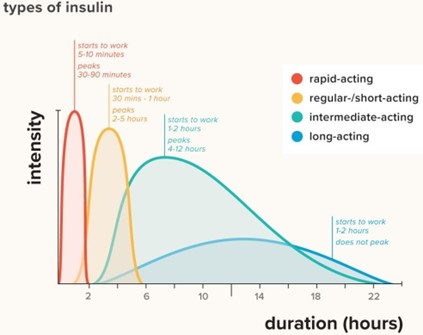Which finding indicates to the nurse that the current therapies are effective for patient with acute adrenal insufficiency (Addison's)?
Increasing serum sodium levels.
Decreasing serum chloride levels
Decreasing blood glucose levels
Increasing serum potassium levels
The Correct Answer is A
In acute adrenal insufficiency, also known as Addison's disease, the adrenal glands are unable to produce enough cortisol and aldosterone hormones. These hormones play an important role in regulating sodium and potassium levels in the body. Therefore, a patient with acute adrenal insufficiency may have low sodium and high potassium levels in their blood.
The goal of therapy is to replace the deficient hormones and normalize the electrolyte levels in the body. If the current therapies are effective, the nurse would expect to see an increase in the patient's serum sodium levels because of aldosterone replacement therapy. Therefore, option a is the correct answer.
Decreasing serum chloride levels and decreasing blood glucose levels are not directly related to the treatment of acute adrenal insufficiency. In fact, a patient with acute adrenal insufficiency may have low serum chloride levels and low blood glucose levels due to the lack of cortisol hormone.
Increasing serum potassium levels would be an indicator of ineffective treatment or inadequate aldosterone replacement therapy, as aldosterone helps to regulate potassium levels in the body.
Nursing Test Bank
Naxlex Comprehensive Predictor Exams
Related Questions
Correct Answer is A
Explanation
Prochlorperazine is an antiemetic medication that is commonly used to treat nausea and vomiting caused by various conditions, including chemotherapy, radiation therapy, and surgery. Giving the medication before the dressing changes, can prevent or minimize the onset of nausea and vomiting, which can be triggered by the pain and anxiety associated with the procedure.
Option B, keeping the patient NPO (nothing by mouth) for 2 hours before dressing changes, may be helpful in reducing the risk of aspiration if the patient needs sedation or general anesthesia for the procedure. However, it is not directly related to reducing the patient's nausea.
Option C, avoiding performing dressing changes close to the patient's mealtimes, may help reduce the risk of nausea caused by an overly full stomach, but it is not directly related to reducing the patient's nausea during the procedure.
Option D, administering prescribed morphine sulfate before dressing changes, may help reduce the patient's pain during the procedure, but it may also increase the risk of nausea and vomiting as a side effect. Therefore, this option may not be the most useful in decreasing the patient's nausea.
Correct Answer is C
Explanation
The nurse will discuss using rapid-acting insulin such as Lispro (Humalog) for mealtime coverage in a patient with diabetes who is starting insulin therapy. Rapid-acting insulin begins to work quickly after injection, usually within 15 minutes, and peaks at around 1 hour. This makes it an effective choice for covering the rise in blood sugar that occurs after meals.
Options A, B, and D are all long-acting insulins that are used to provide a basal level of insulin coverage throughout the day but are not appropriate for mealtime coverage.

Whether you are a student looking to ace your exams or a practicing nurse seeking to enhance your expertise , our nursing education contents will empower you with the confidence and competence to make a difference in the lives of patients and become a respected leader in the healthcare field.
Visit Naxlex, invest in your future and unlock endless possibilities with our unparalleled nursing education contents today
Report Wrong Answer on the Current Question
Do you disagree with the answer? If yes, what is your expected answer? Explain.
Kindly be descriptive with the issue you are facing.
